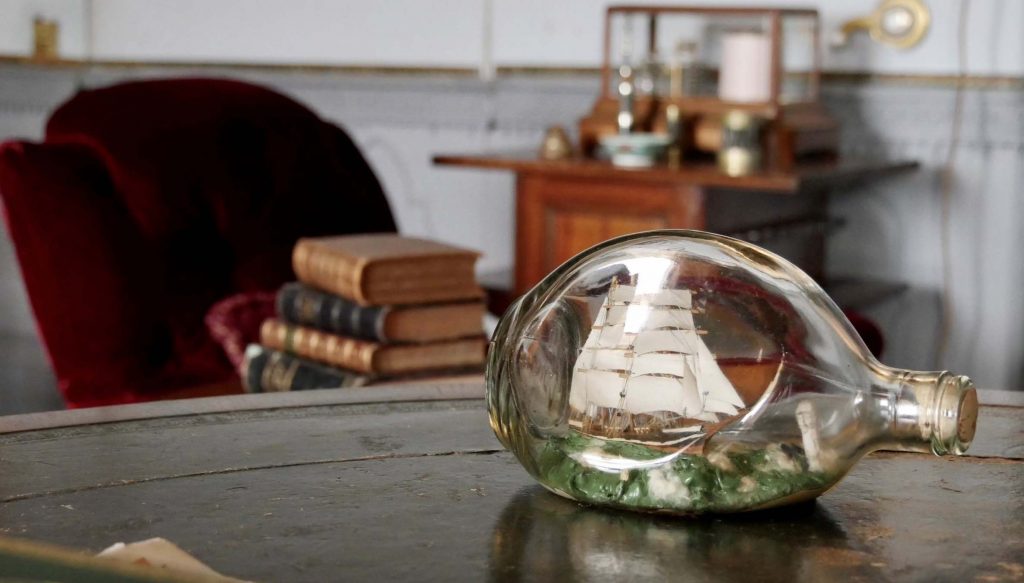Castle Ward house reopens with a fascinating new story to tell.
National Trust reopens Castle Ward house today (Thursday 3 September) following the successful pilot opening of The Argory in July.
- Following the successful reopening of The Argory, the National Trust is reopening Castle Ward house
- The safety of visitors, volunteers and staff remains the priority
- Safety measures include a one-way system and managed numbers
- The opening of The Argory and Castle Ward houses marks the latest in a series of phased steps
- Since the reopening of the majority of its gardens and parklands in June and the Giant’s Causeway in July, more than 225,000 visitors have been welcomed back to National Trust places in Northern Ireland.
The National Trust is reopening Castle Ward house following a successful pilot as it continues to welcome visitors back to the places it cares for.
In July, the charity reopened The Argory in County Armagh, one of seven properties in England and Northern Ireland as part of a phased reopening of its 200 houses, which were closed as part of the national lockdown in March.
Today Castle Ward house will open its doors for the first time in more than five months – with an exciting new narrative to tell and several new safety measures in place.

One-way systems and limited numbers inside houses will ensure that social distancing is possible, while enhanced cleaning and hand sanitising stations will be made available.
The story of Castle Ward will unfold through a series of room displays, costumes and audio installations. It’s known to most as a house of two halves, one side Classical and the other Gothick with this unusual choice put down to a marital disagreement. This new interpretation seeks to tell the truth behind the myths and celebrate the architectural masterpiece as a triumph of collaboration.
Visitors will experience the Classical side first, discovering fine eighteenth century plasterwork, a dining table laid out for a Georgian feast and many more period treasures by the best of Irish craftsmen and artists.
Visitors will then be transported into another world as they move into the Gothick rooms of the Georgian mansion house, a wonder of architecture and plasterwork where you can glimpse into the life of Lady Anne Ward as she entertained her guests in the lavish surroundings.

Visitors can go on a journey into the past and understand why the house was designed in gothic and neo-classical styles.
Collections and House Manager Neil Watt is delighted to be reopening Castle Ward to the public. He said: “We’re thrilled to be able to bring this new story to light as we reopen the doors at Castle Ward.
“Visitors will learn why the house was built and the reasoning behind the differing styles, as well as encounter some of the best of Irish Georgian craftsmanship.
“We’ve really enjoyed this opportunity to tell the story of Castle Ward in a new way and we can’t wait to see visitors filling the spaces with life, as they should be.”
The National Trust will continue to operate an advanced booking system and tickets will grant joint access to the house and gardens. Due to limits on capacity as a result of social distancing, it may not be possible for everyone to access the house during their visit.
John Orna-Ornstein, the National Trust’s Director of Culture and Engagement said: “We have received some fantastic feedback since we started to reopen our places in July and are incredibly grateful for the patience and understanding that visitors and members have demonstrated as we start to welcome people back to our houses.
“This latest reopening is part of a process to open all of our properties safely and we will announce more in the coming weeks and months.
“Being able to share these beautiful places and their histories is what the National Trust is here for and we are truly excited to be able to open these houses and welcome people back.”
Since the reopening of parks and gardens in June and the Giant’s Causeway in July, 225,000 people have visited places cared for by the National Trust in Northern Ireland.
All other National Trust houses in Northern Ireland remain closed for now. Please check the website for details and to book before visiting.

***
About the National Trust.
The National Trust is a conservation charity founded in 1895 by three people, Octavia Hill, Sir Robert Hunter and Hardwicke Rawnsley who saw the importance of the nation’s heritage and open spaces, and wanted to preserve them for everyone to enjoy.
This year, the charity celebrates its 125th anniversary, and these values are still at the heart of everything it does.
To help mark this significant moment in its history, the Trust has committed to achieving carbon net zero emissions by 2030, and establishing 20 million trees to help tackle climate change, creating green corridors for people and nature near towns and cities, running a year-long campaign to connect people with nature and continuing investment in arts and heritage.
Ensuring everyone who visits feels welcome, and more people can access its places continues to be another key aspect of the charity’s work.
Entirely independent of Government, the National Trust looks after more than 250,000 hectares of countryside, 780 miles of coastline and hundreds of special places across England, Wales and Northern Ireland.
The National Trust receives more than 26.9 million visits each year to the places it cares for that have an entry fee, and an estimated 100 million visits to the outdoor places looked after by the charity. Together with 5.9 million members and more than 65,000 volunteers, they help to support the conservation charity in its work to care for nature, beauty, history. For everyone, for ever.
























